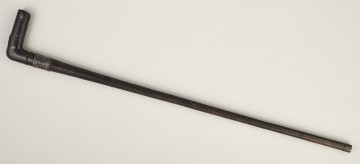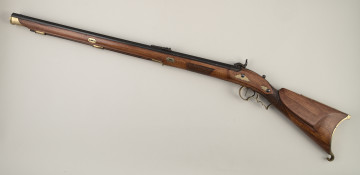
Turkish kilij saber with scabbard
18th-19th century
Castle Museum in Łańcut
Part of the collection: Weapons, music instruments, varia
Kama is a dagger (sometimes called khanjali) very popular in Georgia and in other countries of the Caucasus. Dagger is one of the oldest variants of bladed weapon, it was already known in antiquity. For the sake of simplicity, we can say that it was a miniature of a sword, but in contrast, it was usually carried on the right side of the body. All characteristic features of a dagger can be found in gladius, the sword of Roman legionaries. It is characterized by a straight (much more rarely curved) blade, which is double-edged and quite wide. Our kama has two-blades which are almost parallel to each other, passing into a sharp point and two fullers (on both sides of the blade) forged asymmetrically (not in the axis of the blade) thus avoiding the weakening of the blade. Hilt of the dagger is narrow, partially clad (usually it is a buffalo or deer horn). Both linings are the same width as a narrow hilt to which they are attached by three brass studs. The whole hilt is crowned by a prominent pommel. Scabbard of our dagger is wooden, clad with black buckskin, so-called cap with a silver neck and a chape. The metal parts of the scabbard are engraved with oriental patterns and decorated with niello in Caucasian fashion.
Author / creator
Dimensions
height: 55 cm, width: 5.7 cm
Object type
Weapons, instruments, varia
Technique
forging
Material
bone, horn, wood, steel
Creation time / dating
Creation / finding place
Owner
Castle Museum in Łańcut
Identification number
Location / status

18th-19th century
Castle Museum in Łańcut

20th century
Castle Museum in Łańcut

18th century
Castle Museum in Łańcut
DISCOVER this TOPIC
National Museum in Szczecin
DISCOVER this PATH
Educational path